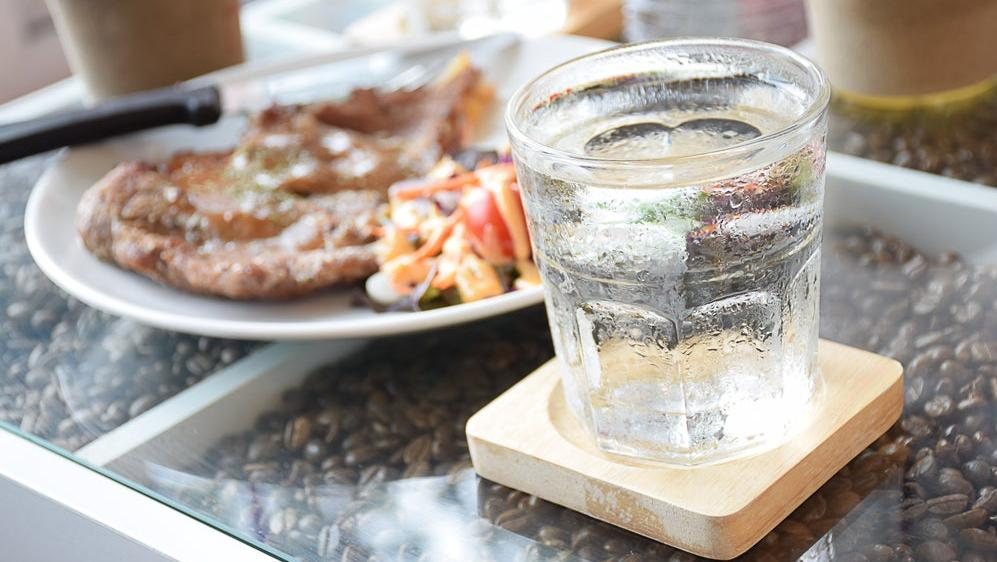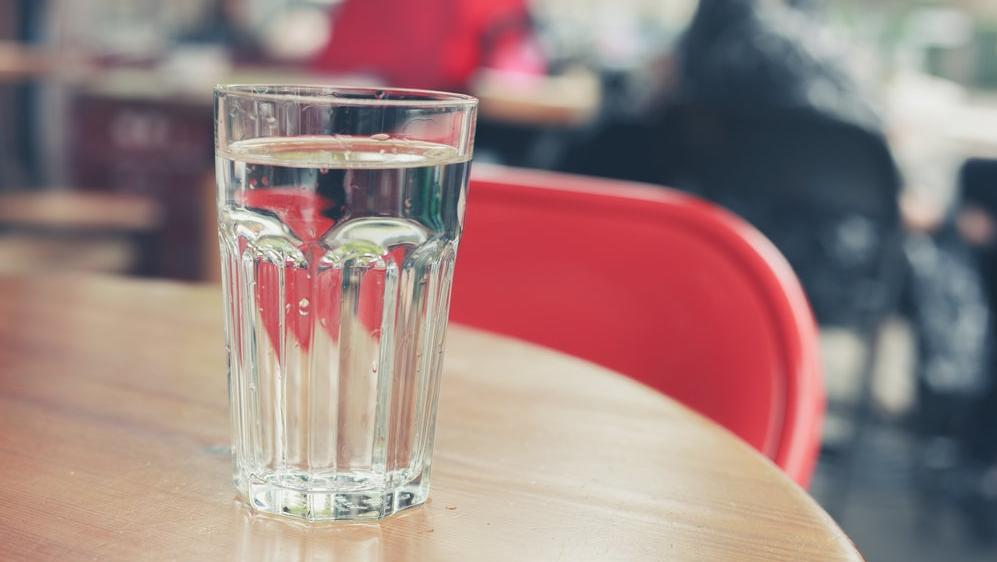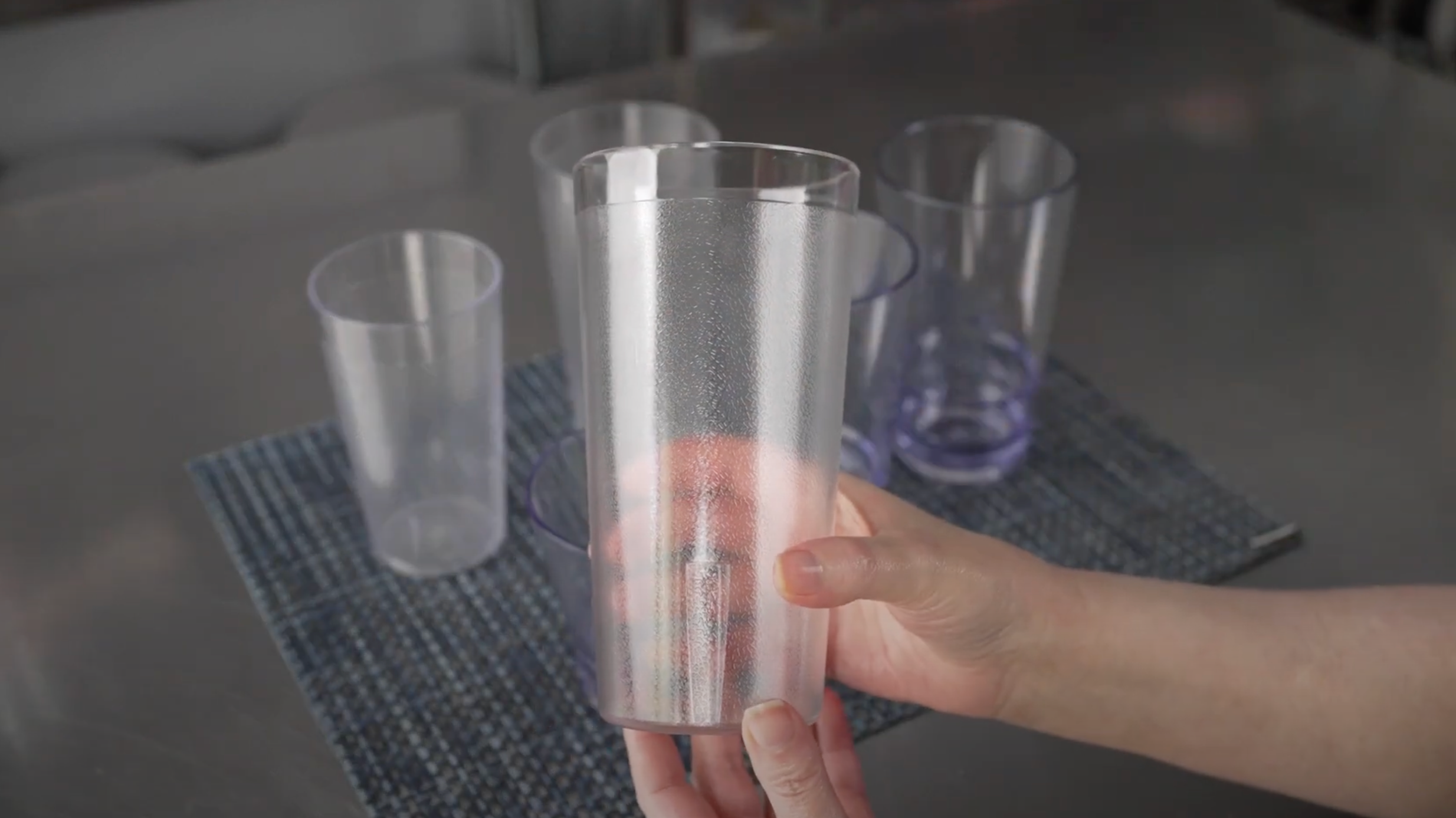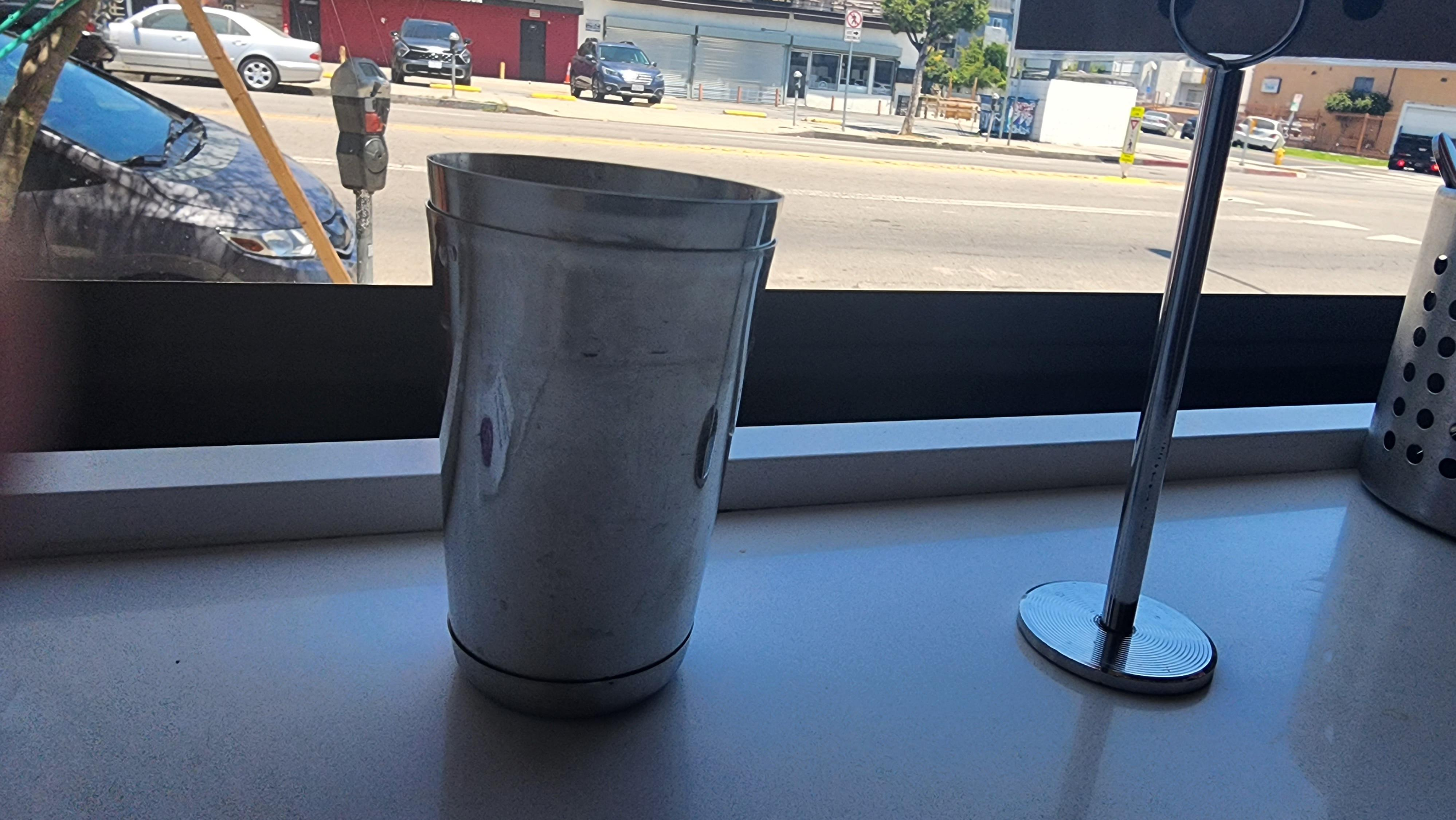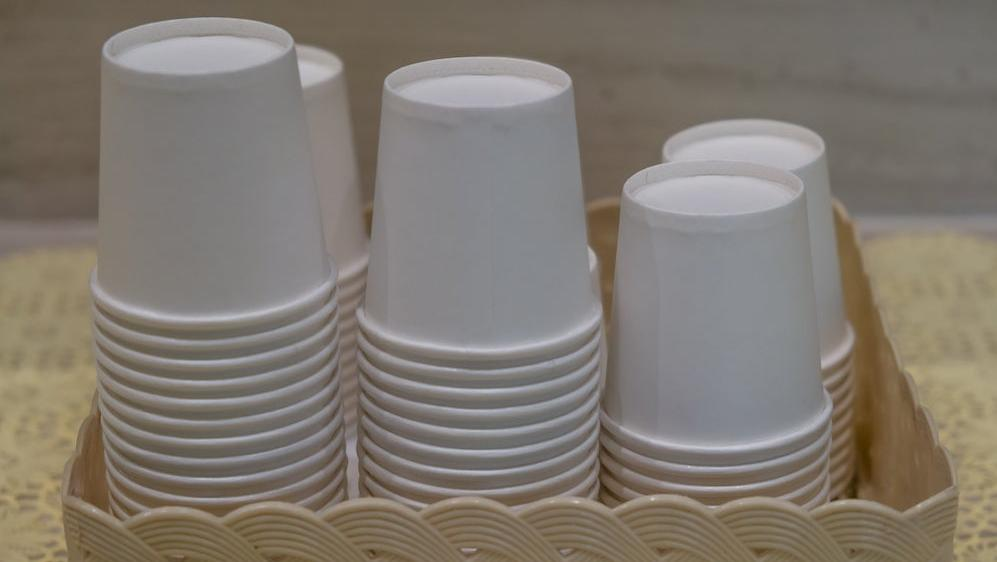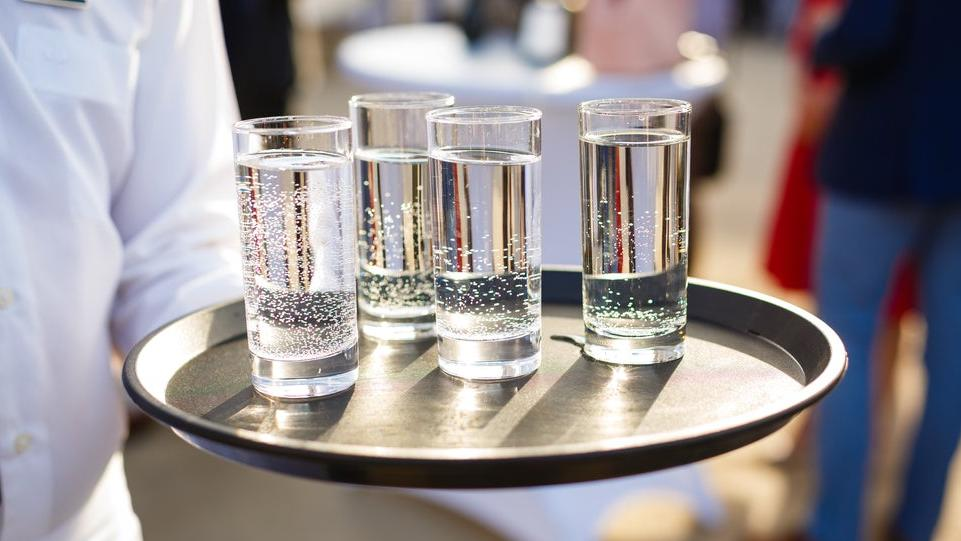How Restaurants Choose Their Water Glasses
Drinking glasses can have a big impact on the overall meal. We explore five popular choices.
If you run a restaurant, the way you serve water matters.
It's a bilateral issue that affects both customers and staff, and as the first thing to hit the table, the water glass is central to the customer experience. Sometimes the glass can act as a roadblock; if it's too small it needs to be refilled often, and if a server doesn't come around enough, a diner can be left feeling unsatisfied, parched, and maybe even a tad anxious. Meanwhile, a giant, hulking water glass is surely functional, but for many restaurant owners, these lack elegance and can be hard for patrons to maneuver. Self-serve water stations are an option for counter service restaurants that don't employ a traditional waitstaff, but keeping a water jug full during peak hours can be its own nightmare.
So, is there some tried-and-true glass that every restaurant should adopt? How do restaurants go about choosing the ideal drinking vessel?
Bob Broskey, chef and partner at Lettuce Entertain You and overseer of RPM Restaurants in Chicago, has lots of insight on water glasses.

"It all depends on the restaurant," he says. "Usually [we're] looking for something in the ballpark of 12 ounces. Always chilled water, no ice. If it's a huge restaurant, we're going with a glass double the size so the staff doesn't have to refill every three minutes."
Size is a key consideration here, since servers can't be spending their whole shift refilling water glasses (though I love it when they can leave a carafe or a pitcher of water at the table). Not every restaurant employs the same thinking that Bob does, though. Here's a rundown of some popular water glasses you'll often see at restaurants, with an examination of why each one works, and why they sometimes don't.
Gibraltar glass
This glass is industry standard, and for good reason. Its cut glass is ridged along the side, lending a sparkling appearance, and the whole thing tapers toward the bottom. Though they come in many different sizes, you'll typically see a smaller 7- or 9-ounce glass at upscale establishments and a 12-ounce one at more casual restaurants. The latter is perfect for water service; it's the ideal middle ground between diners who gulp it down and those who only take a few sips.
Smaller Gibraltar glasses look nicer, but they don't always get the job done, especially at a restaurant with spicy food. In these instances, any glass smaller than 12 ounces is the enemy, and it'll certainly be something that diners remember about their meal.
Plastic tumblers (aka Pepsi cups)
What's great about these "pebbled" plastic tumblers is that they usually come in big-ass, 24-ounce-minimum volumes, and they're often emblazoned with the Pepsi logo. You'll usually find these cups in conjunction with a soda fountain, and they're ubiquitous at most pizza places, sandwich shops, and barbecue restaurants (I've also seen them at some taco joints, too). Recently, I was served water and ice in a Pepsi tumbler at Balkan House in Detroit.
These plastic cups, though, have a habit of diminishing the senses. "I don't like pizza shop cups, they hold smells," says chef and culinary director Lo Hoang. Managing editor of The Takeout Marnie Shure shares this view, and I'm sure many others do as well. Although methods like using baking soda and vinegar to clean the glasses could deodorize the cups, I don't think many restaurants are doing anything but running them through a dishwasher over and over again.
Personally, I love getting a giant-ass Pepsi tumbler, because it means I'm not going to have to get any refills at all. Cups of this size should be mandatory at every hot chicken, Sichuan, and Thai restaurant, but especially wing restaurants. I asked Broskey which cup he would use for a wings place, and he replied, "a fire hose."
The Pepsi tumbler isn't quite that, but it does carry a ton of water and a ton of ice, perfect for restaurants that serve spicy food. Well, perfect if it's cleaned properly, at least.
Note: As Dennis Lee covered in this article, some restaurants are Pepsi-affiliated and other restaurants are Coke-affiliated. Pledging allegiance to one of these beverage giants unlocks a discount on their products, and for some reason, I see a lot more Pepsi tumblers than Coca-Cola ones out there.
Stainless steel tumblers
Check out this sturdy and stocky metal cup that looks like it was made from WWII surplus. Friends & Family in Los Angeles uses these cups, which sit next to a large water dispenser.
The benefit of the stainless steel tumbler is that metal keeps cold water cold for much longer periods of time—and it gets real hot in Los Angeles. The water was exceptionally cold throughout my entire stay at Friends & Family. Also, unlike plastic tumblers, the material doesn't retain the smells from several rounds in the dishwasher. Stainless steel famously rejects odors, which is great news for folks who don't like drinking out of a musty Pepsi cup.
I appreciated the cold water and metal cup combo almost as much as Friends & Family's delicious BLT.
Paper cups
A self-serve water station with small paper cups is a common sight at counter service restaurants, but it just doesn't do the job. Over at Austin's Cherrywood Coffeehouse, a cafe and lunch spot specializing in breakfast tacos, sandwiches, and salads, there's a water cooler in the back with a stack of these cups beside it. I love Cherrywood, but not only does the water always run out (it's situated far from the kitchen), the paper cups just don't carry much water, either. That means you're likely having to get up and refill your cup two or three times in the middle of a sandwich. These small paper water cups are only 3 ounces, and in our modern hydration era, that just isn't a lot of volume.
Highball glasses
A lot of upscale restaurants will simply double their cocktail glasses and use the duplicates for water. The style is really nice: elegant, slim, and befitting the overall vibe of the restaurant itself. Dish Osteria in Pittsburgh, an old-school yet continually fashionable restaurant, serves water in highball glasses. This works best for places like Dish, which serves classic Mediterranean and Italian fare. There's rarely anything spicy on the menu, so there's not much need to be guzzling down water with your grilled Portuguese sardines.
A highball glass is about 8-12 ounces, within the ideal range. If it contains any ice, though, you can bet you're going to need a refill soon.
That won't be an issue at any of Broskey's restaurants. "Absolutely no ice," he reiterates.
